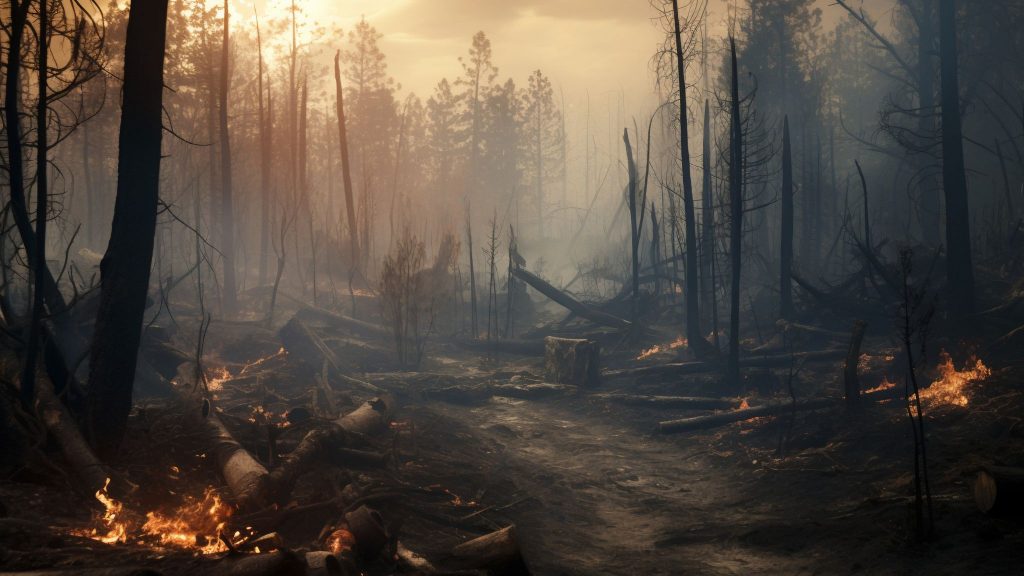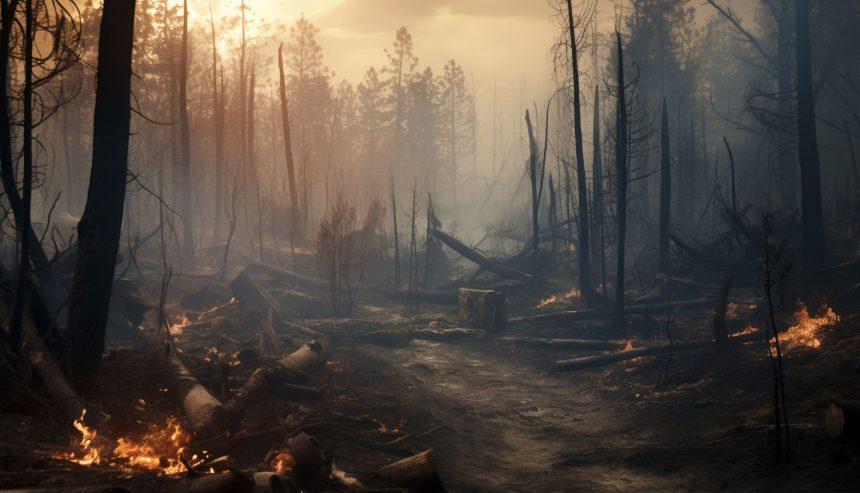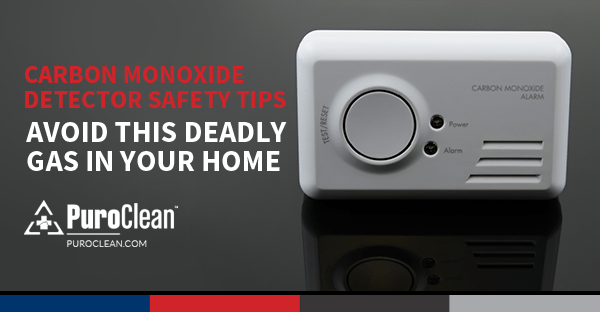Table of Contents
Preparing Your Home for Wildfire Season
Utah’s rugged beauty, characterized by vast forests, dry high deserts, and sweeping canyons, comes with a seasonal risk that residents have grown all too familiar with—wildfires. As climate change intensifies and drought conditions persist, wildfire season in Utah has become more prolonged and severe, making preparation not just advisable but essential.
Whether you live in a rural mountain town or on the urban-wildland interface, preparing your home for wildfire season can protect your family, property, and community.
In this guide, we’ll cover essential wildfire prevention tips and strategies for restoration if a fire does impact your property.
Understanding Utah’s Wildfire Risks
Utah’s wildfire season typically spans from late spring through early fall. The dry climate, coupled with frequent lightning storms and human activity, can quickly spark fires that spread rapidly due to strong winds and abundant dry vegetation.
According to the Utah Division of Forestry, Fire and State Lands, more than 60% of wildfires are caused by human activity. This makes prevention not only possible but imperative. Being proactive about your home and property can make a critical difference.
Prevention: Defending Your Property Before the Flames Arrive
1. Create Defensible Space
Creating defensible space is one of the most effective ways to protect your home. This involves clearing vegetation and combustible materials within a certain radius of your home to reduce fire intensity and slow its spread.
- Zone 1 (0–5 feet around your home): Keep this area lean and clean. Remove dead plants, dry leaves, firewood stacks, and anything flammable. Use gravel or stone instead of mulch near the foundation.
- Zone 2 (5–30 feet): Trim trees to ensure branches are at least 10 feet away from your home and from each other. Keep lawns mowed and well-watered.
- Zone 3 (30–100 feet): Thin out dense vegetation and remove dead trees or branches. Create space between plants and maintain trees regularly.
2. Fire-Resistant Landscaping
Opt for fire-resistant plants such as yarrow, ice plant, or lavender. Use hardscaping elements like rock walls, gravel paths, and stone patios to create natural firebreaks.
3. Harden Your Home
Your home’s construction can greatly affect how it withstands wildfire. Consider the following:
- Roof: Use fire-resistant materials like metal, tile, or Class A asphalt shingles.
- Vents: Install ember-resistant vent covers to prevent wind-blown embers from entering.
- Windows: Use dual-pane, tempered glass to resist heat.
- Decks & Fences: Build with non-combustible materials and clear out debris underneath.
- Gutters: Keep them clear of pine needles and leaves, which can catch embers.
4. Emergency Preparedness
Have a wildfire action plan:
- Evacuation Routes: Know at least two routes out of your area and share them with family members.
- Go-Bag: Pack essentials like medications, water, clothing, food, important documents, and chargers.
- Communication Plan: Establish contact with neighbors and designate a meeting place.
- Insurance Review: Ensure your homeowner’s insurance covers wildfire damage and is up to date with accurate valuations.
Restoration: What to Do After a Wildfire
If a wildfire has impacted your home or property, the emotional and physical toll can be overwhelming. Recovery is a process, but with careful steps, restoration is possible.
1. Assess Damage Safely
Do not return to your home until authorities declare it safe. Watch for hazards like hot spots, weakened trees, unstable structures, or downed power lines.
2. Document the Damage
Take photos and videos of the damage for insurance purposes. Include structural damage, landscape impacts, and contents of the home. Keep receipts of temporary repairs and expenses.
3. Professional Cleanup
Hire licensed fire damage restoration professionals. They can handle:
- Smoke and soot removal
- Structural drying
- Odor control
- Air quality testing
Be wary of unlicensed contractors who often appear after disasters. Verify credentials and references.
4. Soil and Erosion Control
After a wildfire, the soil becomes hydrophobic, meaning it repels water. This can lead to dangerous erosion and flash floods. Work with environmental experts to:
- Install erosion control blankets or wattles
- Re-seed with native grasses to stabilize soil
- Build check dams or silt fences to prevent runoff
5. Rebuilding with Resilience
If rebuilding is necessary, consider incorporating firewise construction materials and techniques. Work with builders experienced in fire-resistant design. Use this opportunity to reduce future risk.
Community Efforts & Resources
Wildfire preparation isn’t just about individual homes—communities that plan together are safer together. Utah has several programs to support fire preparedness:
- Firewise USA®: A national program that helps communities reduce wildfire risks through education and planning.
- Utah Fire Sense Campaign: A state-led effort to promote fire safety and reduce human-caused wildfires.
- Ready, Set, Go! Utah: A wildfire preparedness guide for Utah residents from the Utah Department of Public Safety.

Final Thoughts
Preparing your home for wildfire season in Utah is not an optional task—it’s a necessity. With each season bringing new challenges, it’s critical to take a proactive approach that combines prevention, readiness, and restoration planning.
By creating defensible space, hardening your home, and engaging with your community, you can significantly reduce your wildfire risk. And if the worst does happen, having a fire damage recovery plan in place will help you navigate the path back to normalcy with resilience and confidence.
Stay safe, stay ready, and help protect Utah’s beauty for generations to come.



